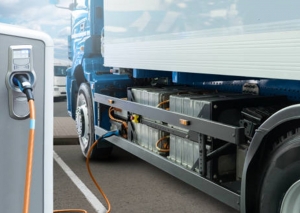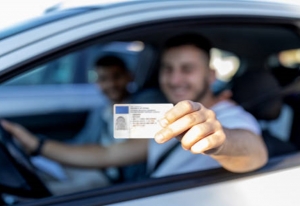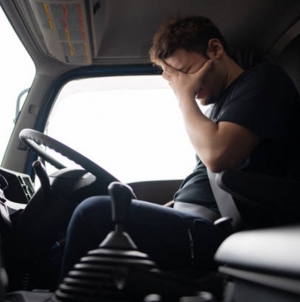Test Owner
First Electric HGV in the UK Joins Welch’s Transport
The first electric heavy goods vehicle (eHGV) from the eFreight 2030 consortium has been delivered to Welch’s Transport in Cambridgeshire. The 42-tonne Renault Truck will operate from the company’s Duxford site, handling regional distribution and long-haul deliveries. This marks the first use of Renault Trucks' heavy-duty electric model in UK operations.
Welch’s Transport and Renault Trucks are among the 14 founding members of eFreight 2030, part of the Government’s Zero Emission HGV and Infrastructure Demonstrator (ZEHID) programme. The initiative aims to introduce 100 eHGVs and 32 new charging locations, helping shape the future of zero-emission transport in the UK.
Chris Welch, managing director of Welch’s Transport, highlighted the company's commitment to sustainability, noting that the addition of the electric HGV is a significant milestone in decarbonising road freight. The company has already invested in electric vehicles, including a 19-tonne e-truck for Cambridge's Net Zero delivery service and a 150kW supercharger at its Duxford site.
Michael Boxwell, Group CEO of Voltempo, which leads the eFreight 2030 consortium, expressed enthusiasm for the project, stating that real-world insights from eHGV operations will demonstrate how electric vehicles can replace conventional HGVs at scale.
Hauliers Face £10m in Fines for Migrants Found in Vehicles
Haulage companies were issued nearly £10 million in fines last year after migrants were found hidden in vehicles, according to figures revealed by the Home Office. A total of 1,276 penalties were handed out in 2023/24 under the Clandestine Entrant Civil Penalty Scheme, which targets those carrying illegal migrants, with fines reaching up to £10,000 per person discovered.
Dominic Graham, manager of Alcaline Transport in Kent, noted that many drivers and companies are law-abiding but face significant challenges in preventing stowaways. He stressed that while deterrents are necessary for those acting illegally, the current system needs review, as drivers may struggle to detect hidden individuals despite taking precautions.
The government maintains that the fines aim to tackle negligence, not deliberate smuggling, with severe criminal penalties for those engaged in people smuggling. However, haulage industry leaders have expressed concerns about losing drivers due to these penalties, despite the existence of a Civil Penalties Accreditation Scheme, which reduces fines for companies with strong security measures.
Although recent security measures have reduced the number of stowaways at Channel ports, smugglers continue to target road transport, including lorries and even caravans. A Home Office spokesperson emphasised the government's commitment to stopping illegal migration and tackling smuggling operations.
Research Reveals Support for Age-Based Driving Licence Revocation in the UK
Research reveals that one in 20 Britons believe that drivers should automatically lose their licence upon reaching the age of 50 due to concerns about "old age." A recent poll indicates that over a third of UK adults support the idea of age-based licence revocation. The survey highlighted diverse opinions on the appropriate age for this measure, with 5% advocating for 50, 8% for 60, and 11% for 70. The increasing number of older drivers is evident, as the DVLA reports that over 40 million people hold a licence in the UK.
Regional variations are notable, with nearly half of respondents in Greater London supporting licence revocation at 50, compared to just 28% in Scotland. Northern Ireland displayed the strongest opposition, with 78% against the idea of age-based licence removal. The survey also revealed significant support for regular retesting, with 70% of Britons in favour. Many suggested retesting every decade, while others preferred intervals of 20 or 30 years.
Aidan Rushby, founder and CEO of Carmoola, noted that public sentiment indicates a desire for older drivers to retake their tests to ensure road safety. The survey showed that attitudes shifted significantly when considering the future of autonomous vehicles, with over a third of respondents who initially supported revoking licences for those over 70 changing their views if older drivers had access to self-driving cars.
Younger adults showed more enthusiasm for older drivers using autonomous vehicles, with 46% of those aged 25-34 supporting the idea, while only 24% of individuals aged 55 and above felt the same. Currently, drivers must renew their licence every three years after turning 70 to maintain their eligibility to drive on UK roads.
New Driving Licence Proposals Aim to Improve Road Safety for Young Motorists
Experts are advocating for new driving licence regulations in the UK aimed at enhancing road safety, particularly for younger motorists. The RAC Foundation has approached the Minister for the Future of Roads, recommending the introduction of a "Graduated Driving Licensing" (GDL) scheme, which has proven successful in reducing accidents in various countries. This initiative would restrict younger drivers, typically those aged 17 to 19, from carrying passengers for a designated period to help them gain essential driving experience.
The proposed regulations suggest a minimum six-month learning phase before drivers can take their practical test. After passing, new drivers would be prohibited from having passengers under 25 unless accompanied by an older adult during the first six months. Violation of these rules could result in six penalty points, leading to an immediate licence suspension and a requirement to retake the driving test, as outlined in the New Drivers Act 1995.
The RAC Foundation highlights the alarming statistic that drivers aged 17 to 24 represent a significant portion of road casualties, being involved in one-fifth of all fatal and serious collisions despite making up only 7% of licence holders.
In addition to these proposals, Thames Valley Police has launched the Go Drive initiative, which employs behavioural science to promote road safety among young drivers. This one-hour educational programme will be implemented in schools and community groups to foster safer driving habits and ultimately save lives on the road.
Rising Freight Crime Sparks Calls for Tougher Security and Sentencing
HGV drivers are increasingly concerned about the rise in freight-related crime, with most fuel and asset thefts occurring in the second half of the year, according to new research. The Road Haulage Association (RHA) has warned that the industry requires 11,000 additional secure parking spaces to help deter organised crime and provide operators with peace of mind when drivers park overnight.
A survey of 500 professional drivers by Samsara, a specialist in industrial technology, revealed that a third of respondents believe thefts are on the rise, with the majority of incidents happening between July and December. Nearly half (47%) knew of colleagues who had fallen victim to fuel or asset theft, and 32% felt that UK truck stops lacked adequate security.
The RHA has confirmed the growing issue of freight crime, stating it poses challenges for hauliers in recruiting and retaining staff. They are calling for tougher sentencing for criminals targeting HGVs and the introduction of a specific offence for freight crime to reflect its wider impact.
The association highlighted that over 5,300 freight crime incidents occurred last year, resulting in the theft of goods worth £68 million. The average loss per incident was over £13,000, prompting the RHA to urge the government to take immediate action to tackle the issue.
XPO Launches Female Driver Academy to Boost Gender Diversity in Logistics
XPO, a leading provider of sustainable logistics solutions across Europe, has launched a new Female Driver Academy aimed at attracting more women into the logistics industry. The Academy offers a 12 to 16-week training programme, during which participants will be employed by XPO from day one, allowing them to earn a living while developing their skills as HGV drivers. The goal is to create a highly skilled team of professional female drivers who are well-versed in XPO's customer operations.
The Academy is part of XPO's wider Driver Excellence Academy, which supports individuals from diverse backgrounds in obtaining HGV qualifications. Trainees can upskill from a Cat B car licence to a Cat Class C (Rigid) or Cat CE (Artic), with the possibility of progressing straight to a Cat CE licence. The programme provides ongoing mentorship and guidance to ensure participants have the support they need during training.
XPO’s initiative has gained the backing of key customers, who have pledged to offer employment opportunities to successful candidates upon completion of the training. The company aims to expand its pool of HGV drivers while promoting gender diversity in a traditionally male-dominated industry.
By offering tailored training and employment opportunities, XPO is working to make the logistics sector more inclusive, while addressing the industry's growing demand for qualified drivers.
UK Businesses Urge Approval of Lower Thames Crossing for Economic Boost
Businesses across the UK are urging the government to approve the Development Consent Order (DCO) for the Lower Thames Crossing, which has been in planning for over a decade. More than 70 organisations, including Asda, Landsec (owner of Bluewater), the British Chambers of Commerce, and the Port of Dover, have signed a letter to Transport Secretary Louise Haigh, emphasising the critical importance of this Nationally Significant Infrastructure Project. The decision on the DCO is due by 4 October 2024.
The Lower Thames Crossing is set to provide a vital link between the north, Midlands, and the south-east ports, creating a new road tunnel between Essex and Kent. The crossing is expected to boost the UK economy by up to £40 billion, generating high-quality jobs and skills, especially in Kent and Essex. Currently, the Dartford Crossing, which handles 40% of all freight traffic, is regularly congested, costing the economy over £200 million annually. The new crossing would ease this burden, improving productivity and reducing delays.
Business leaders from major companies, such as Asda and Bluewater, have highlighted the benefits the crossing would bring, including improved transport efficiency and reduced emissions. Asda's logistics team noted that the project would enhance operational efficiency by providing an alternative route for HGVs, while Bluewater stressed the positive impact on regional growth and customer experience.
The crossing would be a key part of the UK’s transport infrastructure, helping move goods more efficiently. It would also play a crucial role in supporting the supply chain, with half of all freight vehicles travelling through Dover destined for regions beyond London.
Cornwall College Boosts HGV Training with New Lorries Investment
Cornwall College Camborne has welcomed two new lorries as part of a major investment to enhance training opportunities for students in the heavy goods vehicle (HGV) industry. The college says this "significant investment" will benefit both full-time students and apprentices, helping them develop the necessary skills to succeed in the growing HGV sector.
Funded by the Department for Education, the new vehicles will provide hands-on experience with state-of-the-art technology, giving students access to the latest tools and techniques used in the industry. Neil Atkinson, curriculum area manager for engineering and motor vehicles, called the purchase a "fantastic addition" that will allow for more comprehensive and up-to-date training.
Luke Bazeley, head of campus, said the HGVs are a "game changer" for aspiring engineers and mechanics. He emphasised that these vehicles would enable students to learn locally, giving them vital skills for a sector with increasing demand for trained professionals.
This investment marks a key step in expanding the college's ability to prepare students for successful careers in the HGV industry, offering them real-world experience with modern equipment.
Starting a Career in Driving
The logistics sector in the UK is rapidly growing, with a rising demand for drivers, especially for vans and Large Goods Vehicles (LGVs) or Heavy Goods Vehicles (HGVs). Despite an increase in van numbers, there’s a shortage of HGV drivers, making it a great time to consider a career in the industry.
What Does a Commercial Driver Do
HGV drivers play a critical role in the movement of goods, ensuring deliveries reach their destinations. Responsibilities include vehicle checks, securing loads, planning routes, and keeping accurate records of driving hours with digital tachographs. Drivers also need to comply with working time regulations, which limit driving to 56 hours a week.
Why Become a Truck Driver
With increasing demand and fewer drivers, opportunities are plentiful. It’s a job for responsible, patient individuals with good driving skills and flexibility. Pay is competitive, typically ranging from £23,000 to £45,000, and can go up to £55,000 for specialist drivers.
Career Potential
HGV drivers can pursue various roles such as Tanker Driving, Transport Manager, or Health and Safety Officer. You can obtain additional qualifications like Class 1 (C+E) or Class 2 (Cat C) licences, opening doors to even more opportunities.
How to Get Your HGV Licence
You can train through an apprenticeship or self-fund HGV training to gain a relevant licence. You’ll need to pass the LGV theory test, hold a full car licence, be over 18, and meet medical requirements.
Gaining Experience
After obtaining your HGV licence, gain experience through logistics agencies that offer temporary contracts, giving you the chance to work with different companies and potentially secure permanent positions.
Driver CPC
To drive large goods vehicles commercially, you need a Driver Qualification Card (DQC) and must complete periodic Driver CPC training. This involves 35 hours of training every five years, covering essential topics like health and safety and fuel efficiency.
Driver Jargon and Terminology
If you're new to logistics, you might hear terms like "sleeper cab," "tramper," or "ADR" (for hazardous goods drivers). Understanding these terms will help you navigate the world of commercial driving.
Licence Categories
- Van Driver (Cat B): Vehicles up to 3,500kg.
- 7.5 Tonne Driver (Cat C1): Vehicles between 3,500kg and 7,500kg.
- Class 2 Driver (Cat C): Vehicles over 7,500kg with a trailer up to 750kg.
- Class 1 Driver (Cat C+E): Category C vehicles with trailers over 750kg.
Other Opportunities in Logistics
Beyond driving, the logistics industry offers roles like Transport Planner, Forklift Operator, and Warehouse Supervisor. There are many paths within this vital sector.
For more information, explore Quicktemps latest roles here!
Disclaimer
This information has been gathered from sources including GOV.UK and RoSPA. Although every effort has been made to ensure accuracy, Quicktemp and its affiliates accept no liability for any errors or omissions.
Mental Health
Did you know that 1 in 4 people in the UK experience a mental health issue each year? Professional drivers are considered a high-risk group for mental health concerns, and cases are rising. While progress has been made, many still find it difficult to talk about mental health. Opening up the conversation is key.
We regularly discuss physical health, so why not mental health? The information here is a starting point for that conversation.
Mental Health in the Workplace – Key Facts
- 15 million working days were lost to stress, anxiety, and depression in 2017 (ONS)
- Addressing mental health in the workplace can boost productivity and reduce absences
- Stressful environments, such as those faced by drivers, can exacerbate mental health problems
- 95% of people calling in sick due to stress often provide a different reason
Why Are Drivers a High-Risk Group
- Unpredictable working conditions like traffic and tight deadlines
- Sedentary lifestyle, poor diet, and lack of sleep contribute to physical and mental fatigue
- Loneliness is a significant issue, as drivers often spend long periods alone
- Most drivers are male, a group less likely to seek help for mental health concerns
Simple Steps for Wellbeing
- Connect: Build and maintain social relationships – talk and listen
- Be Active: Regular exercise boosts both physical and mental health
- Take Notice: Appreciate the changing views around you while driving
- Keep Learning: Stimulate your mind – read or learn something new during breaks
- Give: Acts of kindness benefit your mental wellbeing
Tips for Employers
- Prioritise mental health by encouraging open conversations and promoting resources
- Ensure your team takes regular, quality breaks beyond legal requirements
- Routinely monitor staff wellbeing, asking open questions like "How are you feeling?"
- Offer a confidential support channel for staff members to seek help
Seeking Help
If you or someone you know needs support, consider these resources
- Mental Health UK: www.mentalhealth-uk.org
- Mind: www.mind.org.uk
- NHS Choices: www.nhs.uk
- Samaritans: www.samaritans.org or call 116 123 (free)
Disclaimer
This guide is intended for information only and is not an authoritative document. Quicktemp and its affiliates accept no liability for any errors or omissions. For any mental health concerns, please seek professional medical advice.















